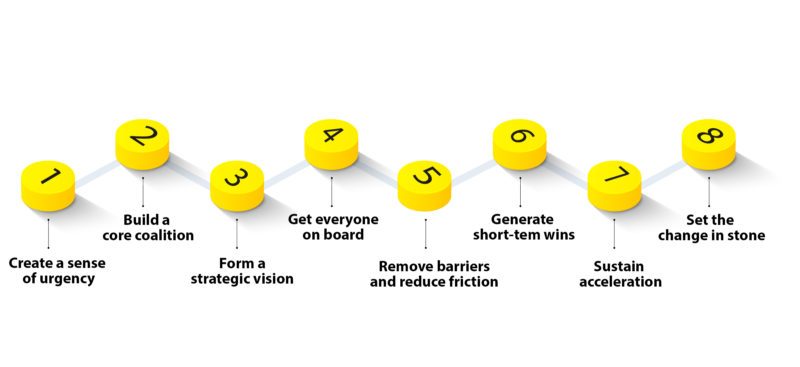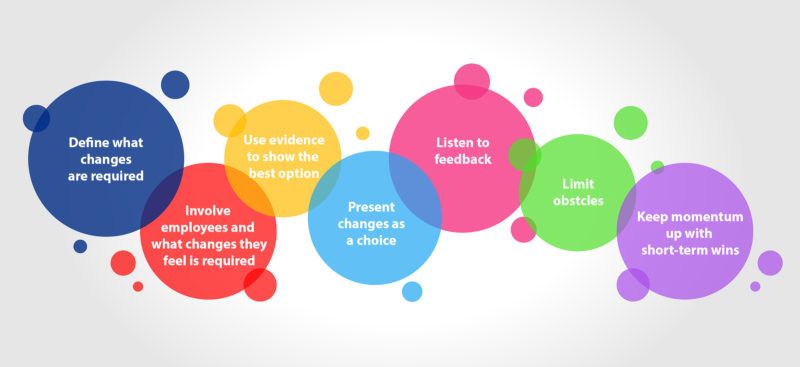How To Leverage Immersive Technology And Drive Behavioral Change
Why behavior change is necessary does not need much explanation. Yet, it is a good idea to be clear about the benefits an organization achieves through behavioral change at the workplace. Positive behavior change, brought about speedily can make organizations adapt to fluctuating market conditions, can support sustainability, boost profitability and increase customer satisfaction building the company's brand.
Since time, immemorial technology has been one of the prime enablers of behavioral change. The discovery of fire during prehistoric times decided the course of mankind, the invention of the wheel led to a drastic change in the behavior of humans. Technology not only changes the behavior of humans but also that of animals. My cat no longer drinks milk, she is hooked on to cat food!
Using technology to attain the desired behaviors is not so uncommon; advertisement campaigns have proven that it can subtly but surely change consumers shopping behaviors, their likes, and dislikes. However, with large-scale digitization and the invention of smartphones, the infrastructure is built in such a way that we can start using immersive technology to drive behavior change in organizations.
There are several behavior-change models that are popularly applied in organizations. Two of these are Kotter's 8-step change model and Nudge Theory. So, let us explain how immersive technology can be used to drive behavior change in the framework of these models.
What Immersive Technologies Are Available To Us?
Immersive technologies typically include Virtual, Augmented and Mixed Reality. For the purpose of this article immersive also includes digital media of communication mainly, interactive videos, animations, games, and simulations. Additionally gathering information digitally through online surveys and receiving feedback are also discussed in this article.
What Models Of Behavior Change Are Available To Us?
Kotter's 8-Step Change Model
Kotter's theory is an 8-step process that enables change in any organization. It is simple and brings clarity to the process. It does have some drawbacks as it does not encourage feedback from the people who are expected to change, namely our employees.

Nudge Theory
Another simple model is that of Nudge Theory. Nudge focusses on engaging the employees and driving the change from within the team. It has high stakeholder buy which makes the process more lucrative.

The combination of these two models can be brought through immersive technology. Technology will also make the process simpler and accelerate the process of change. Let us look at the application of each technology to drive behavior change.
How To Use Immersive Technology To Drive Behavior Change?
To create a sense of urgency, leadership needs to communicate effectively with the employees. Not only is the message important but its delivery and reach make a big difference in communicating the need for the urgency.
In addition to town hall speeches, the use of internal social media platforms and distributing the message via video to employees is found effective. Through the use of subtitles, one can make sure that the message is understood properly by all. Adding some music to it won't hurt either!
Effective teams who communicate as a group can be established via these internal social media platforms. Action tracking and progress features ensure that the efforts are consistent. Feedback is increased by including engaging emojis that encourages employees to give their feedbacks, depending on the company culture comments feature can also be enabled.
The use of online surveys to gather employee ideas is another often used tool that can be applied for organizational change process. Online surveys can be anonymous and will encourage employees to give honest opinions.
The use of interactive scenario-based animations can help employees visualize the consequences of their positive and negative behavior. Positive re-affirmations can be enabled through animations and interactive games. Some of these examples are available to view on our website.
Skill-based behavior changes such as for health, safety and environment, document verifications (cheques, signatures, etc) can be instilled using Augmented and Virtual Reality applications. AR and VR applications are highly engaging and have an element of novelty that makes people interested in the learning and therefore if used strategically, it can work wonders.
Summary
To quickly summarize the above points, the use of immersive technology has been used for many public behavior change campaigns. These include the Swaccha Bharat Abhiyan (Clean India Initiative), Polio Eradication Campaign in India, Fighting Celebratory Gun Fire Campaign in Serbia and many others. Each of these campaigns used storytelling, online polling, interactive websites and animations as part of their communication strategies. It is now time for organizations to make use of these technologies to drive behavior change.









